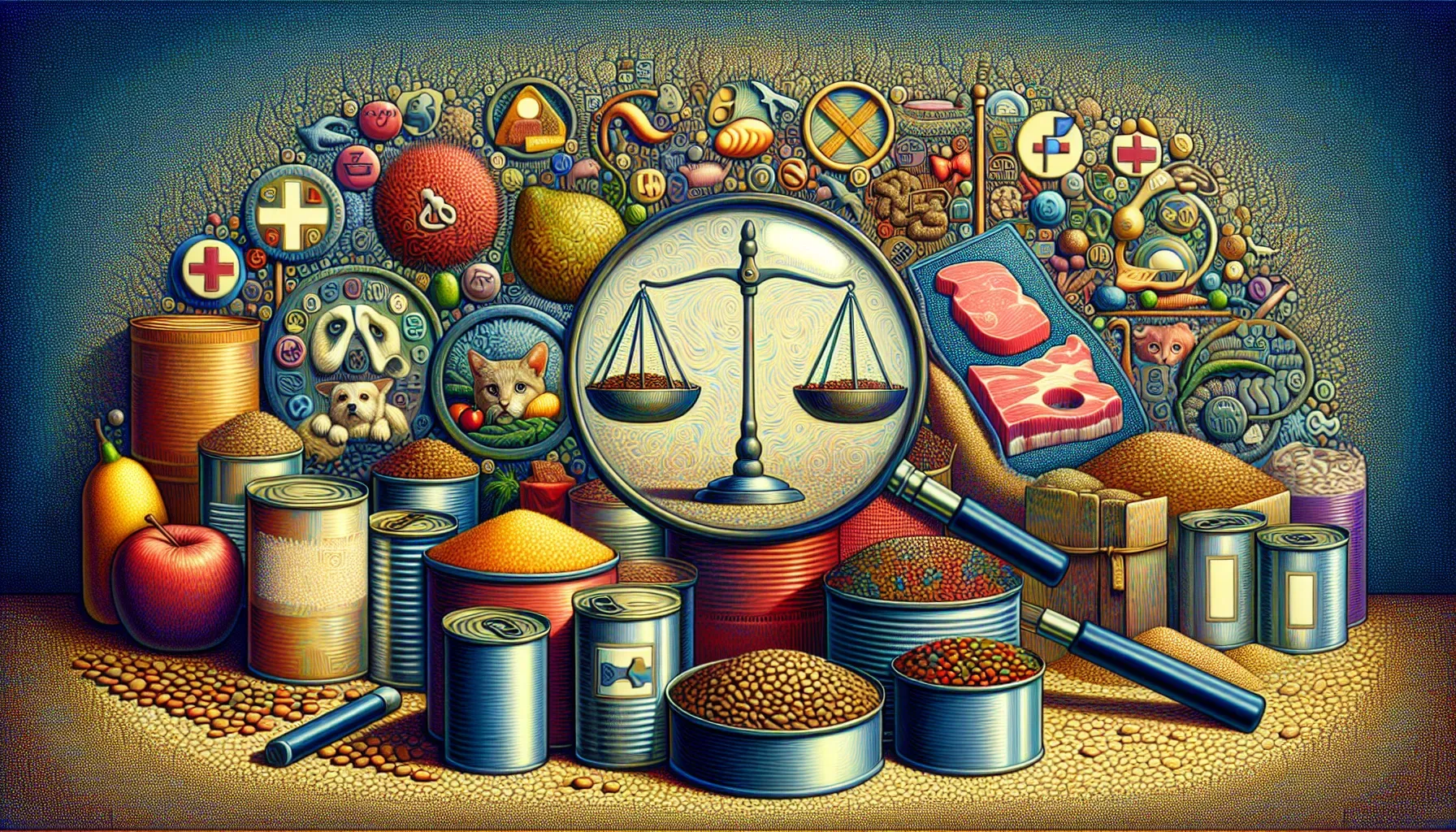Decoding Pet Food Labels: Avoiding Common Mistakes in Choosing Your Pet's Diet

Pet food labels often display percentages of key nutrients like protein and fat. These percentages dictate the nutritional value of the food. It's vital to understand that these percentages are based on "as fed" basis, meaning they represent the nutrient content before processing. Consequently, it's essential to consider the moisture content when comparing different products. Look for guaranteed analysis panels that provide moisture-inclusive nutrient percentages for accurate comparisons.
Understanding Pet Food Labels: Key Nutritional Percentages
One common misconception is that ingredients are listed in descending order of quantity. While this is generally true, there are exceptions for ingredients comprising less than 3% of the total formula or those which undergo significant processing. Understanding this ensures you're not misled by ingredient lists.
Common Misconceptions About Pet Food Ingredients
Filler ingredients like corn or wheat are typically used as inexpensive sources of carbohydrates, often lacking significant nutritional value for pets. Moreover, some fillers may trigger allergies in susceptible pets. Be vigilant and choose foods with wholesome ingredients to avoid potential health issues.
Related Article: Combatting Pet Obesity: Holistic Approaches to Weight Management and Nutritional Balance
The Risks of Filler Ingredients in Pet Food
Preservatives play a critical role in maintaining pet food freshness and preventing contamination. However, certain synthetic preservatives can raise concerns. Look for natural preservatives like mixed tocopherols (Vitamin E) and ascorbic acid (Vitamin C) instead of potentially harmful chemical preservatives such as BHA, BHT, and ethoxyquin.
The grain-free trend has gained traction due to concerns about grain-related allergies and digestive issues in pets. However, recent studies have raised questions about the potential link between grain-free diets and dilated cardiomyopathy (DCM) in dogs. In light of this, consult your veterinarian to assess whether a grain-free diet is suitable for your pet's specific needs.
Preservatives in Pet Food: Safety vs. Necessity
Determining the right portion size goes beyond following generic feeding guidelines. Factors such as age, weight, activity level, and underlying health conditions should be considered. Maximize the benefits of a balanced diet by ensuring that you're feeding your pet appropriately according to their individual requirements.
The Grain-Free Debate: What You Need to Know
Pets can develop allergies or intolerances to certain ingredients commonly found in pet food such as beef, chicken, dairy, and grains. If your pet displays symptoms such as itchiness, gastrointestinal upset or recurring ear infections, investigate potential dietary triggers and consult with a veterinarian to devise an appropriate elimination diet if necessary.
Determining the Right Portion Size for Your Pet
Special circumstances may warrant special diets. Organic and raw diets appeal to those seeking natural alternatives while prescription diets are tailored to manage specific health conditions. Assess your pet's needs holistically with input from a qualified veterinarian when considering these specialized diets.
Despite global efforts to standardize pet food labeling regulations, there are variations across different countries. Familiarize yourself with labeling requirements in your region to make well-informed decisions about your pet's nutrition regardless of where the product is sourced.
Identifying Allergies and Intolerances in Pets
Proper storage is crucial to maintain the quality and safety of pet food. Check expiration dates diligently and store food in a cool, dry place away from direct sunlight to preserve its nutritional integrity. Additionally, consider investing in air-tight containers to extend shelf life and prevent contamination.
Frequently Asked Questions
The percentages on pet food labels indicate the nutrient content, such as protein and fat, based on an "as fed" basis. This means they reflect the nutrient levels before processing. It's crucial to consider moisture content when comparing products, so look for guaranteed analysis panels that include moisture-inclusive nutrient percentages for accurate assessments.
Pets may develop allergies or intolerances to common ingredients like beef, chicken, dairy, and grains. Symptoms such as itchiness, gastrointestinal upset, or recurring ear infections can indicate dietary triggers. If you suspect an issue, consult a veterinarian to create an appropriate elimination diet that helps identify and manage these problematic ingredients effectively.
Specialty diets may be necessary for pets with specific health needs or dietary preferences. Organic and raw diets appeal to those seeking natural options, while prescription diets are designed to manage health conditions. It's essential to assess your pet's individual requirements holistically with guidance from a qualified veterinarian before making dietary changes.






